|
Highlights of Beijing
March 26, 2000. After returning to Sydney from the Australian gold
coast, we board our flight to Singapore and then on to Beijing. We arrived
in China, passed through customs and exited the airport with little fanfare. Our
guide, 'Jane', and her driver met us and whisked us away to the Palace
Hotel. Situated in the older part of the city and on the edge of a high-rent shopping area it was easy for us to grab a quick shower and start
walking the neighborhood.
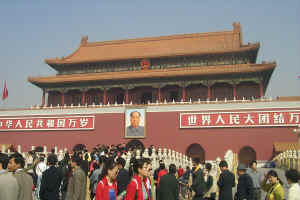 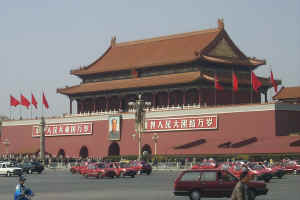
Our first major tourist view was of the outside walls of the Forbidden City,
which originally was off- limits to commoners for 500 years and is the largest and
best-preserved group of ancient Chinese buildings. Laid out in 1406-1420
by Emperor Yong Le, the walled city suffered numerous fires and is now mostly post-18th
Century buildings due to restorations and remodels.
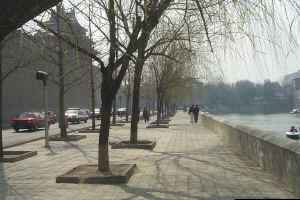 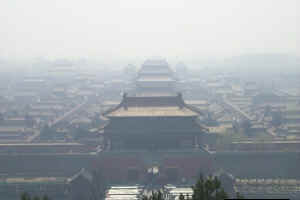
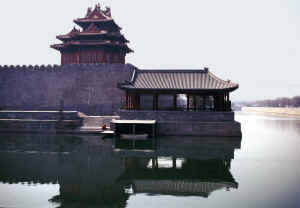
We walked around the western edge of the Forbidden City until
we arrived at the northern gate. A good view of the Forbidden City
looking north to south is from the Jingshan Park across the street. Note the air
quality is not the cleanest.
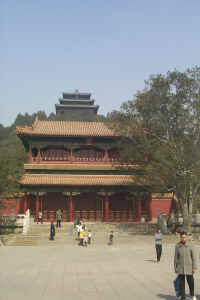 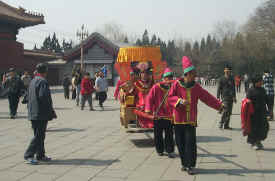
Since it was Sunday, we were entertained in the Jingshan Park by local musicians and and
singers some of which were dressed in ancient costumes.
We decided to stroll through the Forbidden City for a brief
introductory visit.
We entered at the northern gate where the tour buses park and the tourists
were herded into the city .
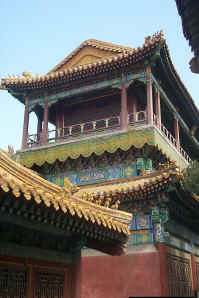 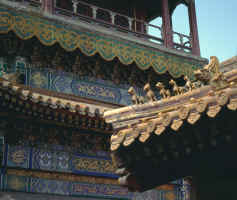
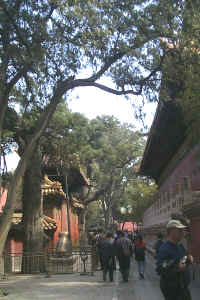 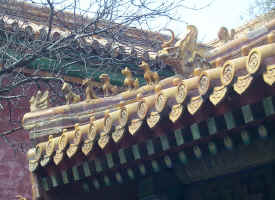
After
a brief introductory walk through the Forbidden City, we exited the south gate
and crossed over to Tiananmen Square.
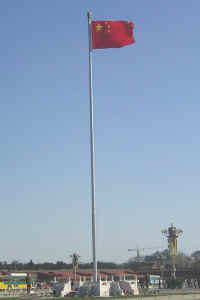 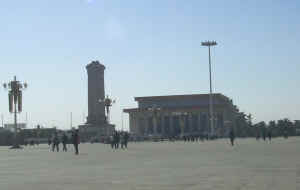
To our immediate right was the Great
Hall of the People. Although this is said to be the heart of the People's
Republic, it is from this building that the police have quick access to any
disturbances on Tiananmen Square. On the opposite corner is the whimsical
shopping mall that contained numerous stores including the cyber cafe which
we frequented for trading emails. 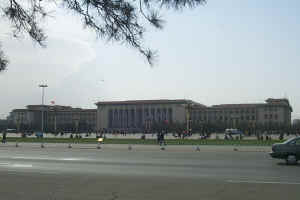 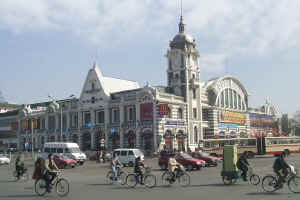
On
the south end of Tiananmen Square is the Chairman Mao Zedong Mausoleum
& Memorial Hall. Here the body of Mao is open for viewing for a modest fee
and upon relinquishing your camera, purse and other personal effects .
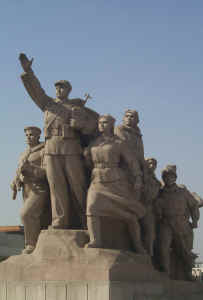 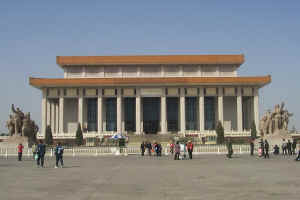 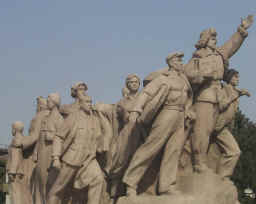
March 27, Great Wall at Badaling. Early in the morning we were
driven northwest of Beijing to the most popular viewing site of the Great Wall
also known as the "10,000 Li Wall" or 'where Clinton visited the
wall'. Originally the wall was begun 2000 years ago during the Qin Dynasty
(221-207 BC) and it is not built contiguously nor continuously. The walls
at Badaling were restored in 1957 and numerous tourist attractions have been
added at the parking lot level.
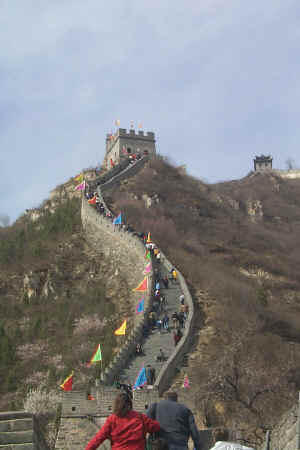 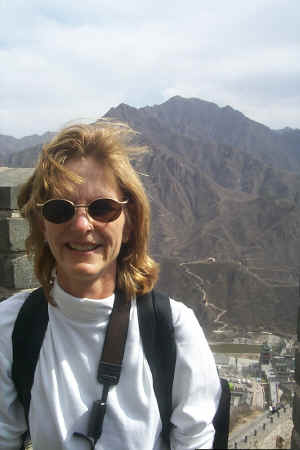
We realized early in our visit that the
restoration phenomena is more the norm for anything espoused to be ancient
Chinese. Every place we visited there were signs of modernization for the
benefit of the tourist - much of the time there was no mention of such
assistance. Due to the variation in the riser steepness and the gusty
winds, our hike up the stairs was challenging. 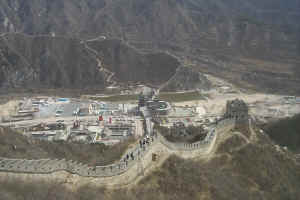 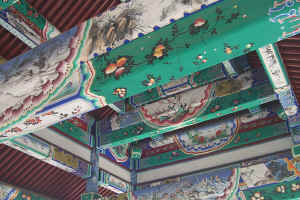
Upon leaving the Great Wall we
headed toward the nearby Ming Tombs. Lunch was at the Jiulong Amusement
Park situated on a man-made reservoir which resembled an abandoned Coney Island. After lunch by ourselves in a huge banquet style restaurant we
spent the afternoon at the Changling Ming tomb built for Emperor Yongle in 1427. 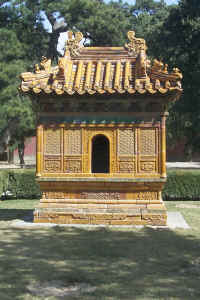 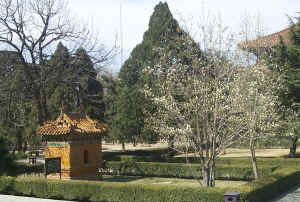
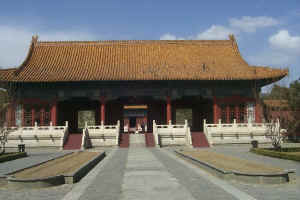 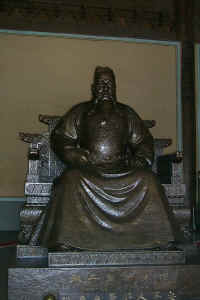
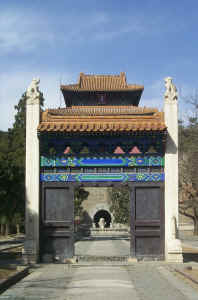 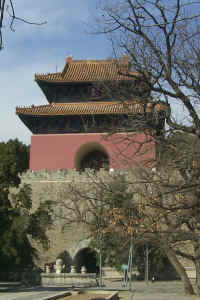 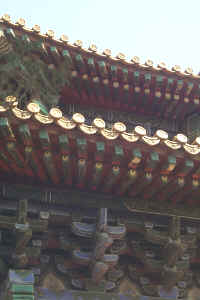
The
surrounding area entombs 13 of 16 Ming emperors. However only 3 of the tombs have
been restored and opened for visitation. As the Egyptians, the Chinese
traditionally were buried with their loved ones and most prized
possessions. Due to the oxidation damage that occurs upon breaking the
seal of the tombs, the Chinese government ordered that the remaining tombs
remain closed until technology can catch up to preserving the quality of the
contents.
After dinner at a famous Beijing duck restaurant, we
attended a live operatic performance.
March 28, Coffee at Starbucks.. 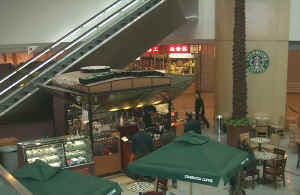
We started the morning with an official tour
of the Forbidden City where we entered from the south gate. We had a better
appreciation for the restoration that the city has undergone recently
primarily due to the money derived from American films ie. The Last Emperor. 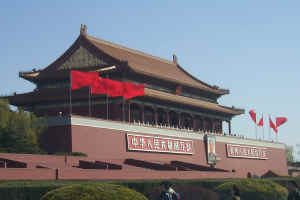 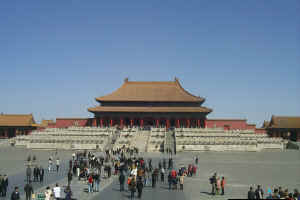
The
decorative details are consistent with the Ming Dynasty emphasis: male/female
dragon figures, Phoenix figures, gargoyles, cranes, turtles. The outer
rooms were used as more public spaces while the inner areas housed the emperor,
empress, family members, concubines, monks and eunuchs.
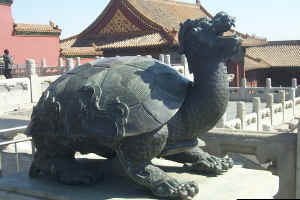 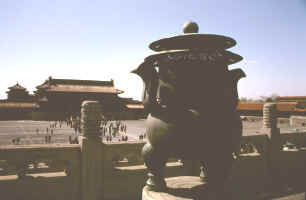
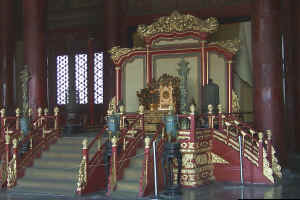 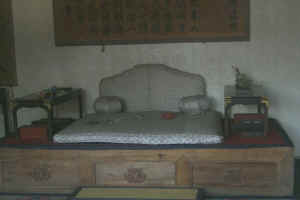
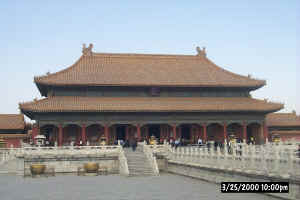 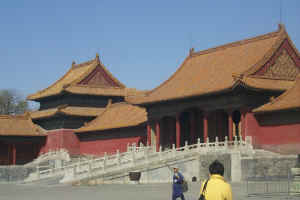
Peace,
Harmony and Tranquility were the names of the major halls of the compound.
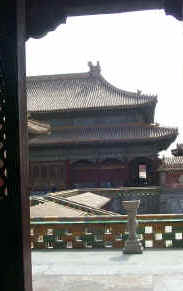 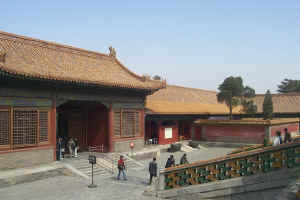
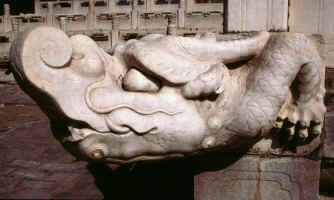
The
green and red glazed tile of the Forbidden City is symbolic of the emperors
colors and is visible throughout the grounds.
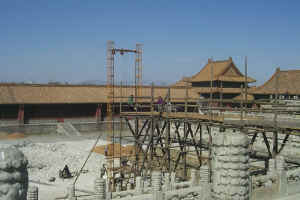
Construction
and restoration never ceases within the City. It is the attention to
detail which sets the City apart from other ancient Chinese buildings.
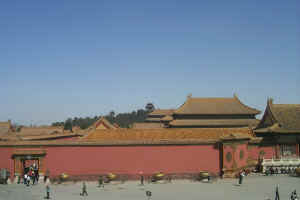 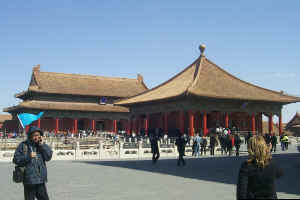
Our
next stop was the Lama Temple or Yellow Hat Tibetan Temple that has remained relatively intact
from the ravages of the revolution. This working temple was very laid back and
community engaged.
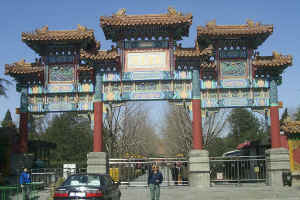 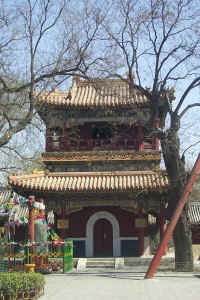
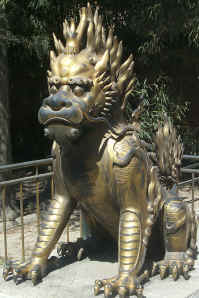 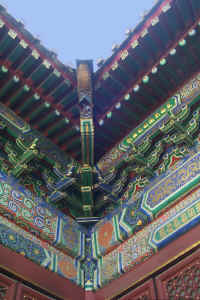
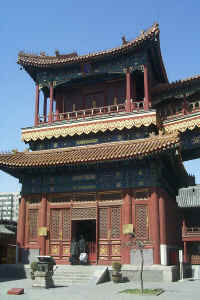 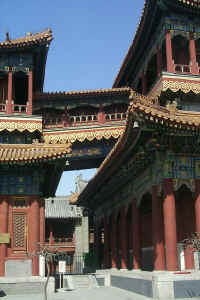 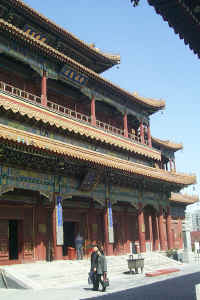
After lunch at Harmony Garden, we arrived at the
Emperor's Summer Palace built originally in the 18th Century and situated along
Kunming Lake. Empress Dowager Cixi most
influenced the summer quarters. She used the money for the navy in 1888 to
rebuild the palace and commission elaborate paintings and artwork for
the compound.
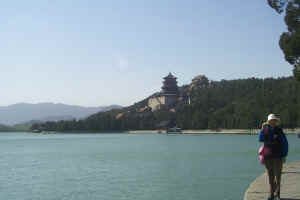 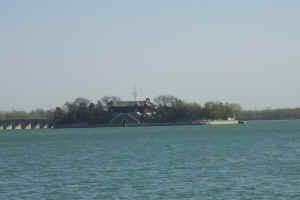
The Summer Palace occupies a park of 692 acres. It was here that the
Emperor and his extended household traveled to escape the heat of the city.
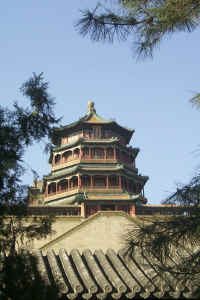 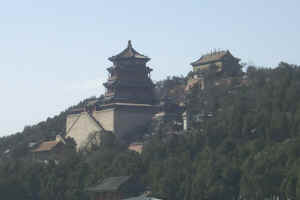
Along the lake is an ornately decorated Long Corridor (728 m long) in which the cross beams
depict mythical stories (8000 paintings) for the purpose of preserving knowledge and awareness. Many
of the scenes were whitewashed during the Cultural Revolution.
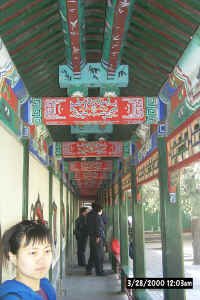 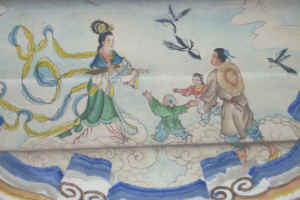
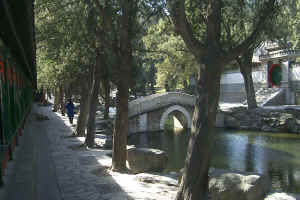 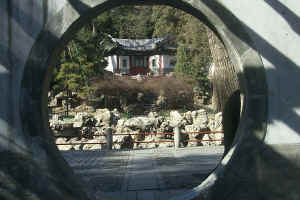
The original palace was divided into four sections: court reception, residences,
temples and outdoor strolling or viewing areas.
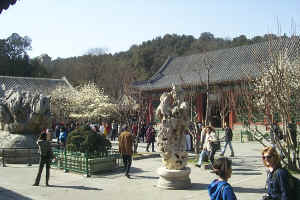
Marble boats
grace the lake where once they were used to host parties for the emperor and his
extended family. The emperor did use wooden boats to maneuver the connected
waterways from the Forbidden City to the Summer Palace.
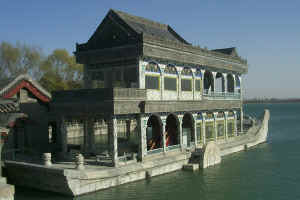 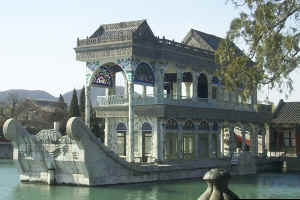
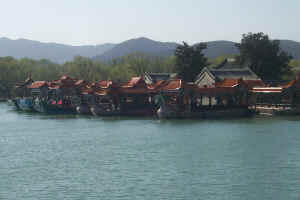 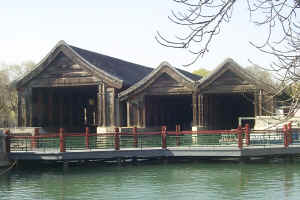
March 29,
Temple of Heaven. Probably the most photographed temple in Beijing is this
building covered by blue glazed roof tiles and designed in a circular form to
represent heaven while surrounded by a square wall representing earth.
Vertical levels have significance: the first tier represents hell, the second is
the mortal level and the third tier is heaven.
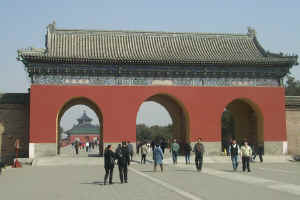 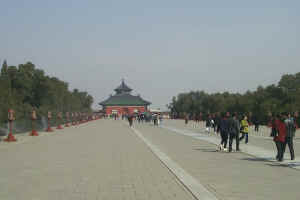
The Temple of Heaven is the
emperor's personal temple which is one of the reasons why the layout is very
processional for holding ceremonial events. Scattered around the grounds
are sites where animals were sacrificed for such ceremonies.
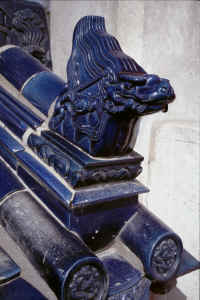 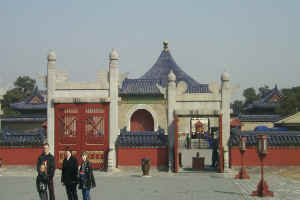
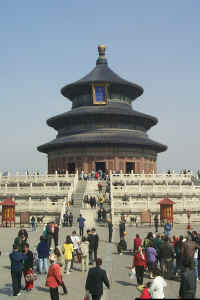
We
escaped our guides this afternoon and walked through Beihai Park and took a
hutong ride in one of the older neighborhoods - after spending considerable time
bargaining for a reasonable rate.
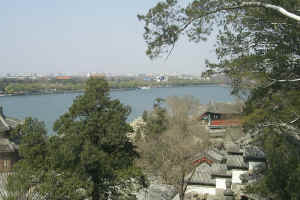
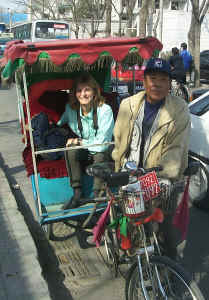 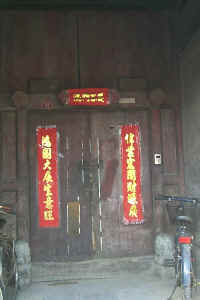
Above is the entry of a typical family residence. Note the masonry and
roof details below.
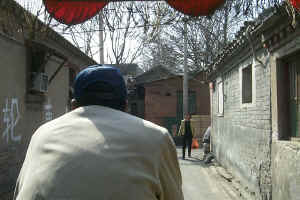 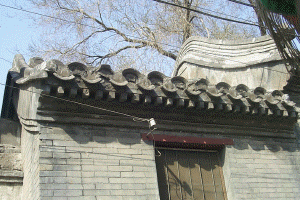
March 30, travel day to Xian.
|